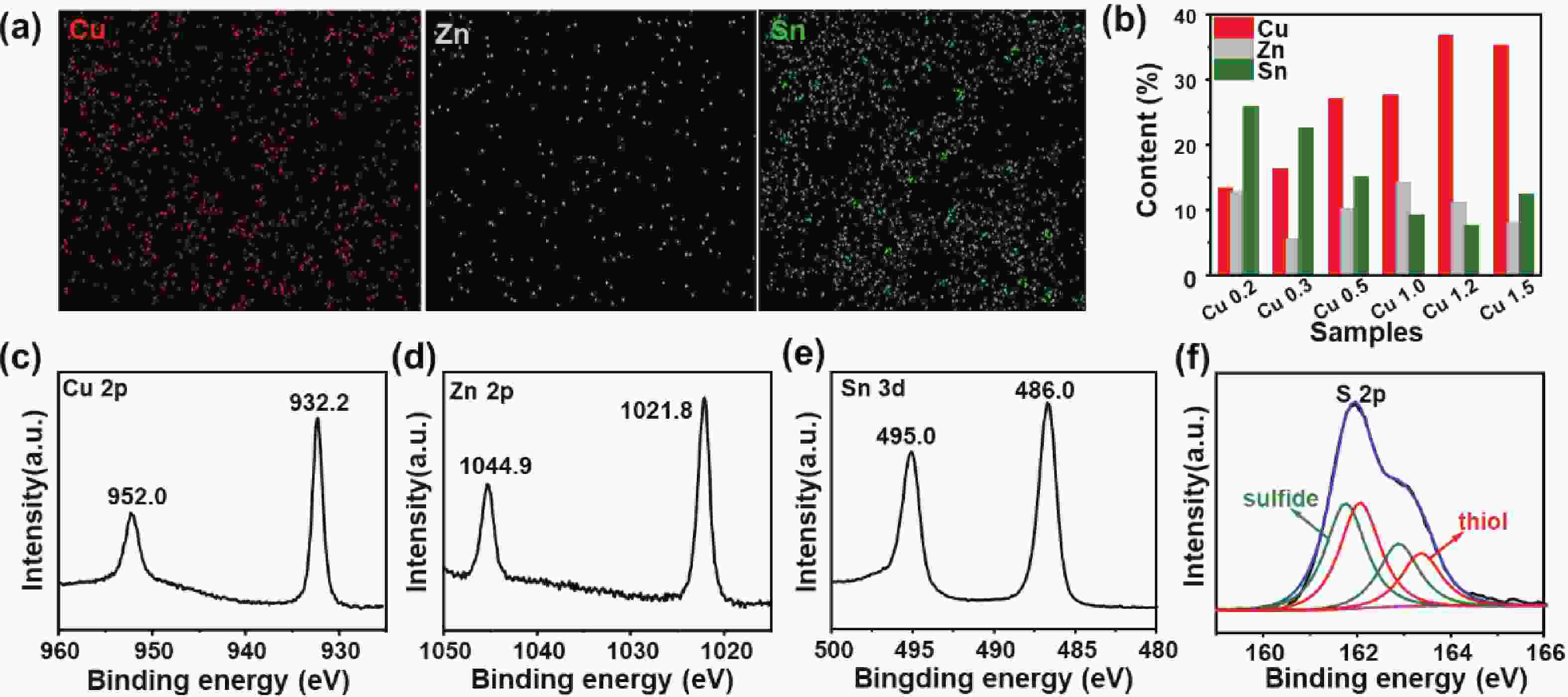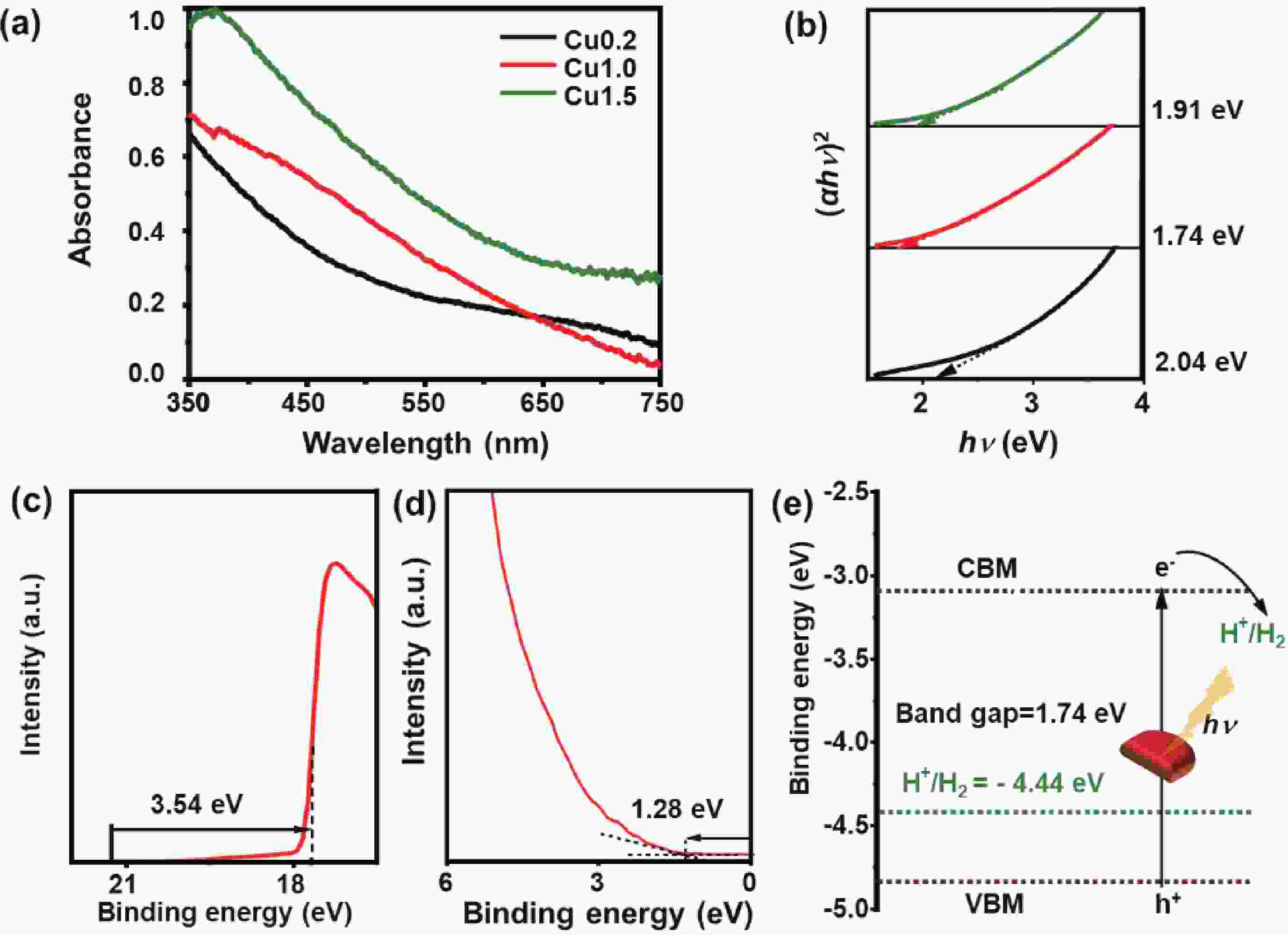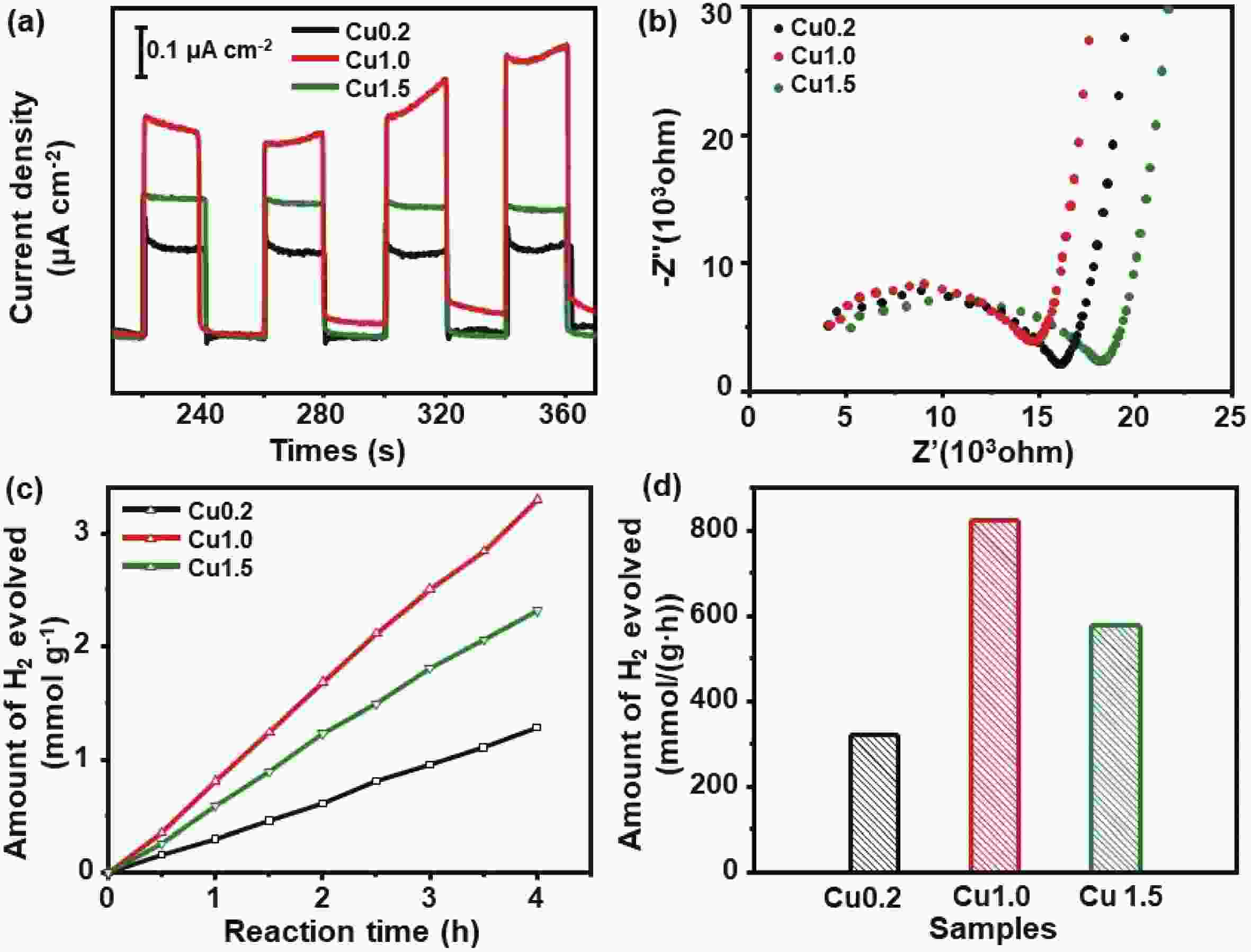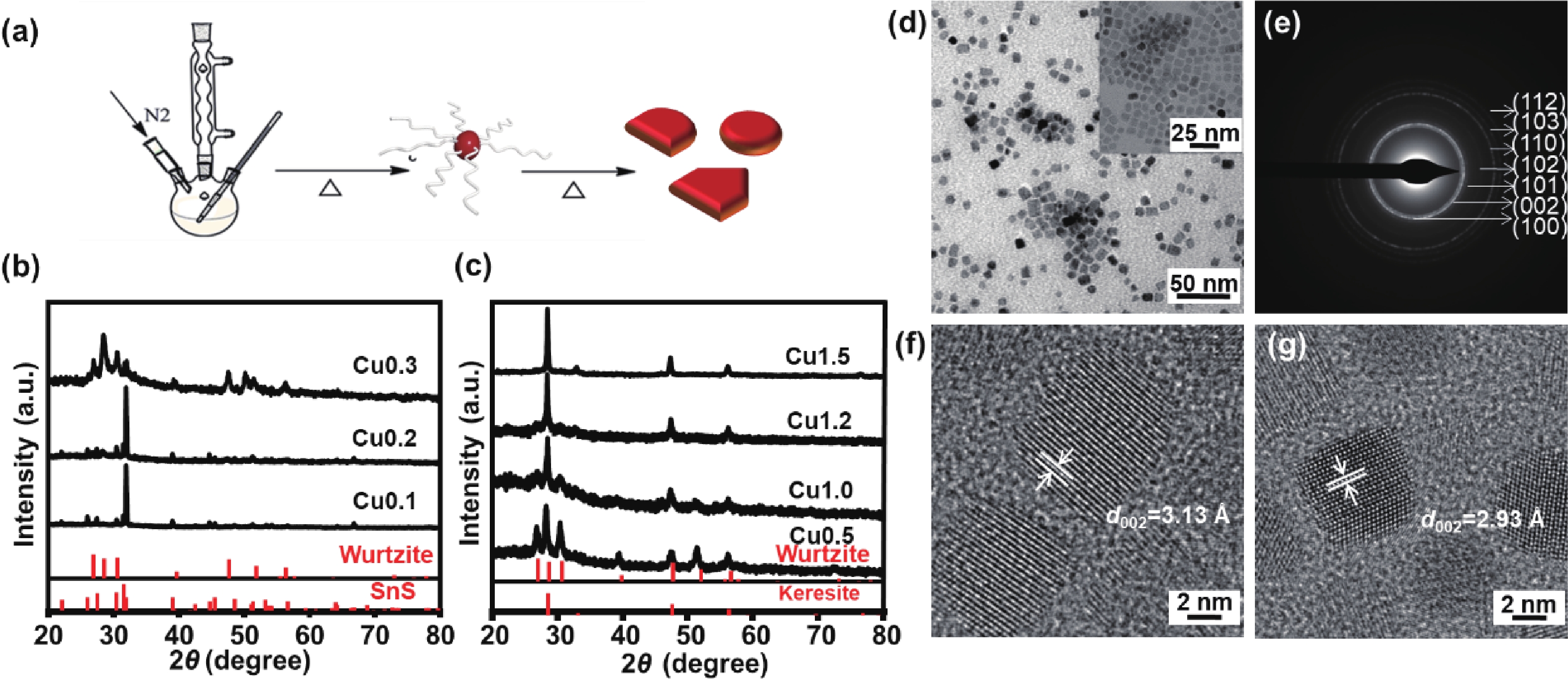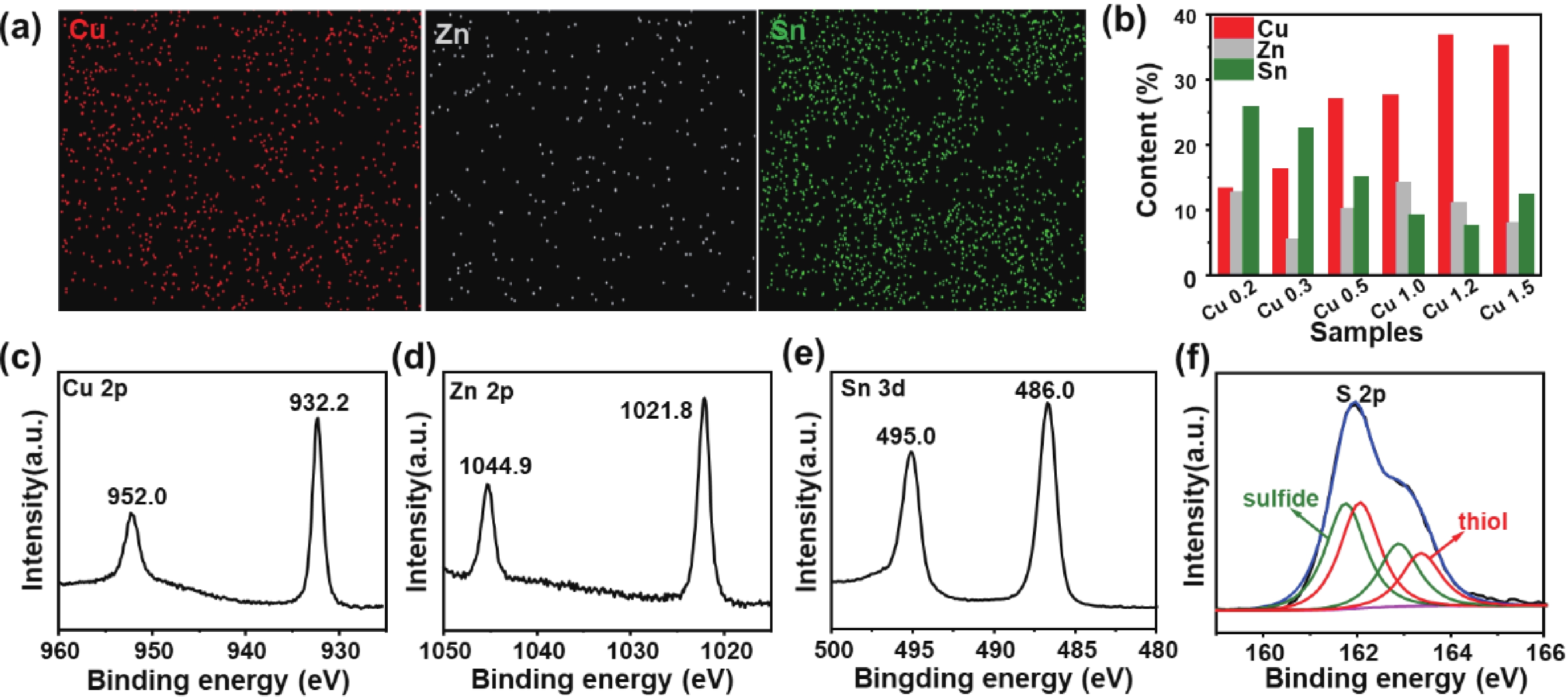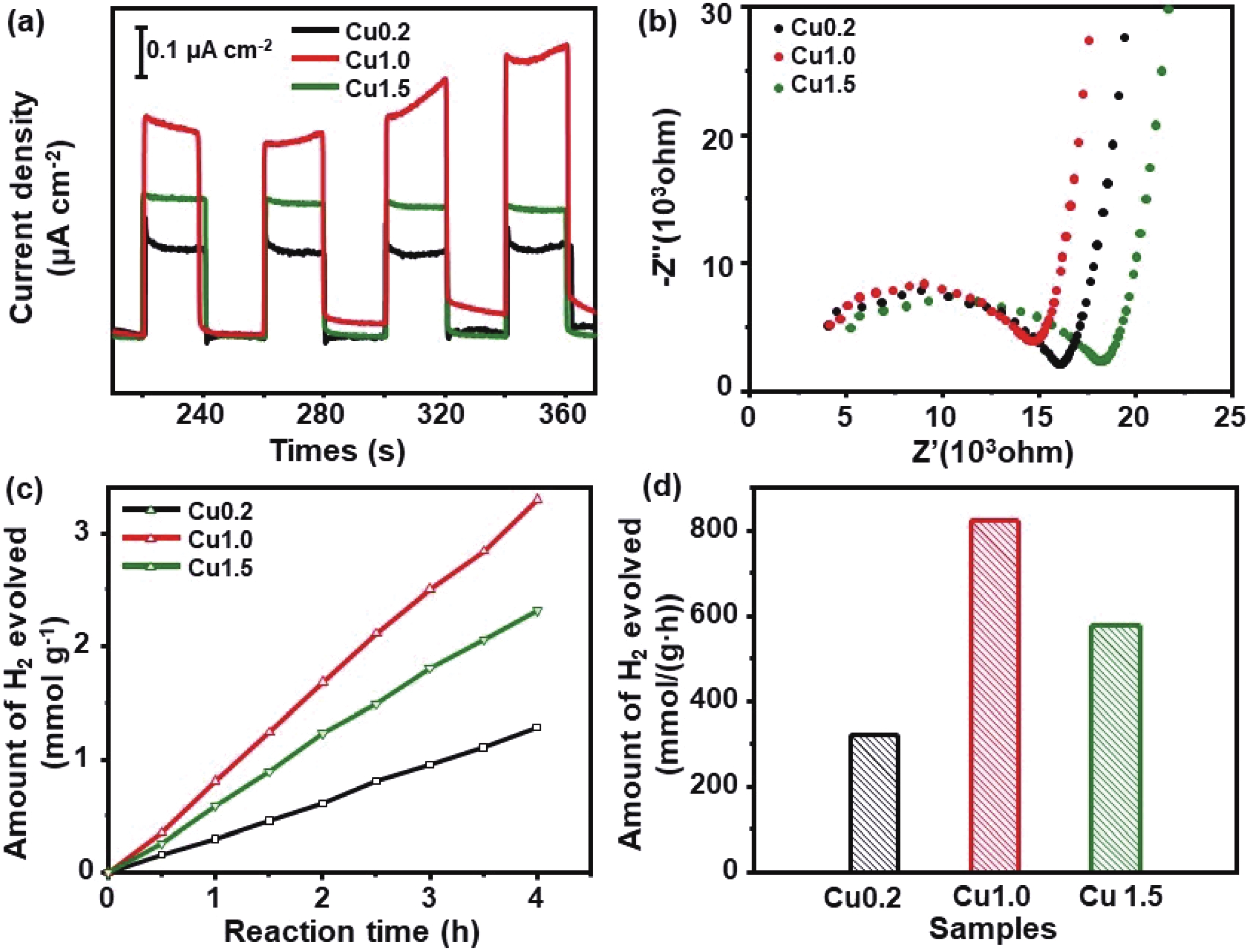| Citation: |
Zhe Yin, Min Hu, Jun Liu, Hao Fu, Zhijie Wang, Aiwei Tang. Tunable crystal structure of Cu–Zn–Sn–S nanocrystals for improving photocatalytic hydrogen evolution enabled by copper element regulation[J]. Journal of Semiconductors, 2022, 43(3): 032701. doi: 10.1088/1674-4926/43/3/032701
Z Yin, M Hu, J Liu, H Fu, Z J Wang, A W Tang, Tunable crystal structure of Cu–Zn–Sn–S nanocrystals for improving photocatalytic hydrogen evolution enabled by copper element regulation[J]. J. Semicond., 2022, 43(3): 032701. doi: 10.1088/1674-4926/43/3/032701.
Export: BibTex EndNote
|
Tunable crystal structure of Cu–Zn–Sn–S nanocrystals for improving photocatalytic hydrogen evolution enabled by copper element regulation
doi: 10.1088/1674-4926/43/3/032701
More Information-
Abstract
Hydrogen energy is a powerful and efficient energy resource, which can be produced by photocatalytic water splitting. Among the photocatalysis, multinary copper-based chalcogenide semiconductor nanocrystals exhibit great potential due to their tunable crystal structures, adjustable optical band gap, eco-friendly, and abundant resources. In this paper, Cu–Zn–Sn–S (CZTS) nanocrystals with different Cu content have been synthesized by using the one-pot method. By regulating the surface ligands, the reaction temperature, and the Cu content, kesterite and hexagonal wurtzite CZTS nanocrystals were obtained. The critical factors for the controllable transition between two phases were discussed. Subsequently, a series of quaternary CZTS nanocrystals with different Cu content were used for photocatalytic hydrogen evolution. And their band gap, energy level structure, and charge transfer ability were compared comprehensively. As a result, the pure hexagonal wurtzite CZTS nanocrystals have exhibited an improved photocatalytic hydrogen evolution activity. -
References
[1] Huang Y B, Liu J, Deng Y C, et al. The application of perovskite materials in solar water splitting. J Semicond, 2020, 41(1), 011701 doi: 10.1088/1674-4926/41/1/011701[2] Hoffmann M R, Martin S T, Choi W, et al. Environmental applications of semiconductor photocatalysis. Chem Rev, 1995, 95(1), 69 doi: 10.1021/cr00033a004[3] Wei W Q, Ouyang S X, Zhang T R. Perylene diimide self-assembly: From electronic structural modulation to photocatalytic applications. J Semicond, 2020, 41(9), 091708 doi: 10.1088/1674-4926/41/9/091708[4] Fujishima A, Honda K. Electrochemical photolysis of water at a semiconductor electrode. Nature, 1972, 238(5358), 37 doi: 10.1038/238037a0[5] Hisatomi T, Kubota J, Domen K. Recent advances in semiconductors for photocatalytic and photoelectrochemical water splitting. Chem Soc Rev, 2014, 43(22), 7520 doi: 10.1039/C3CS60378D[6] Fujishima A, Zhang X, Tryk D A. Heterogeneous photocatalysis: from water photolysis to applications in environmental cleanup. Int J Hydrogen Energ, 2007, 32(14), 2664 doi: 10.1016/j.ijhydene.2006.09.009[7] Chen S, Takata T, Domen K. Particulate photocatalysts for overall water splitting. Nat Rev Mater, 2017, 2(10), 17050 doi: 10.1038/natrevmats.2017.50[8] Low J, Yu J, Jaroniec M, et al. Heterojunction photocatalysts. Adv Mater, 2017, 29(20), 1601694 doi: 10.1002/adma.201601694[9] Huang Y, Liu J, Cao D, et al. Separation of hot electrons and holes in Au/LaFeO3 to boost the photocatalytic activities both for water reduction and oxidation. Int J Hydrogen Energ, 2019, 44(26), 13242 doi: 10.1016/j.ijhydene.2019.03.182[10] Wang H, Wu Z, Liu Y, et al. The characterization of ZnO-anatase-rutile three-component semiconductor and enhanced photocatalytic activity of nitrogen oxides. J Mater Chem C, 2008, 287(1/2), 176 doi: 10.1016/j.molcata.2008.03.010[11] Logvinovich D, Bocher L, Sheptyakov D, et al. Microstructure, surface composition and chemical stability of partly ordered LaTiO2N. Solid State Sci, 2009, 11(8), 1513 doi: 10.1016/j.solidstatesciences.2009.05.024[12] Bao N, Shen L, Takata T, et al. Self-templated synthesis of nanoporous CdS nanostructures for highly efficient photocatalytic hydrogen production under visible light. Chem Mater, 2008, 20(1), 110 doi: 10.1021/cm7029344[13] Liu Z, Zhao K, Tang A, et al. Solution-processed high-efficiency cadmium-free Cu-Zn-In-S-based quantum-dot light-emitting diodes with low turn-on voltage. Org Electron, 2016, 36, 97 doi: 10.1016/j.orgel.2016.05.040[14] Coughlan C, Ibanez M, Dobrozhan O, et al. Compound copper chalcogenide nanocrystals. Chem Rev, 2017, 117(9), 5865 doi: 10.1021/acs.chemrev.6b00376[15] Chang J, Waclawik E R. Colloidal semiconductor nanocrystals: controlled synthesis and surface chemistry in organic media. RSC Adv, 2014, 4(45), 23505 doi: 10.1039/C4RA02684E[16] Aldakov D, Lefrançois A, Reiss P. Ternary and quaternary metal chalcogenide nanocrystals: synthesis, properties and applications. J Mater Chem C, 2013, 1(24), 3756 doi: 10.1039/c3tc30273c[17] Liu Z, Tang A, Wang M, et al. Heating-up synthesis of cadimum-free and color-tunable quaternary and five-component Cu-In-Zn-S-based semiconductor nanocrystals. J Mater Chem C, 2015, 3(39), 10114 doi: 10.1039/C5TC02469B[18] Fu H, Tang A. Rational design of multinary copper chalcogenide nanocrystals for photocatalytic hydrogen evolution. J Semicond, 2020, 41(9), 91706 doi: 10.1088/1674-4926/41/9/091706[19] Fan X B, Yu S, Zhan F, et al. Nonstoichiometric Cu xInyS quantum dots for efficient photocatalytic hydrogen evolution. Chemsuschem, 2017, 10(24), 4833 doi: 10.1002/cssc.201701950[20] Schmidt S S, Abou-Ras D, Unold T, et al. Effect of Zn incorporation into CuInS2 solar cell absorbers on microstructural and electrical properties. J Appl Phys, 2011, 110(6), 64515 doi: 10.1063/1.3639284[21] Li Y, Chen G, Wang Q, et al. Hierarchical ZnS-In2S3-CuS nanospheres with nanoporous structure: Facile synthesis, growth mechanism, and excellent photocatalytic activity. Adv Funct Mater, 2010, 20(19), 3390 doi: 10.1002/adfm.201000604[22] Zhu D, Ye H, Liu Z, et al. Seed-mediated growth of heterostructured Cu1.94S–MS (M = Zn, Cd, Mn) and alloyed CuNS2 (N = In, Ga) nanocrystals for use in structure-and composition-dependent photocatalytic hydrogen evolution. Nanoscale, 2020, 12(10), 6111 doi: 10.1039/C9NR10004K[23] Saldanha P L, Brescia R, Prato M, et al. Generalized one-pot synthesis of copper sulfide, selenide-sulfide, and telluride-sulfide nanoparticles. Chem Mater, 2014, 26(3), 1442 doi: 10.1021/cm4035598[24] Zhu D, Tang A, Kong Q, et al. Roles of sulfur sources in the formation of alloyed Cu2– xS ySe1– y nanocrystals: Controllable synthesis and tuning of plasmonic resonance absorption. J Phys Chem C, 2017, 121(29), 15922 doi: 10.1021/acs.jpcc.7b03826[25] Kuzuya T, Hamanaka Y, Itoh K, et al. Phase control and its mechanism of CuInS2 nanoparticles. J Colloid Interf Sci, 2012, 388(1), 137 doi: 10.1016/j.jcis.2012.08.013[26] Liu Z, Liu J, Huang Y, et al. From one-dimensional to two-dimensional wurtzite CuGaS2 nanocrystals: non-injection synthesis and photocatalytic evolution. Nanoscale, 2019, 11(1), 158 doi: 10.1039/C8NR07353H[27] Liu Z, Tang A, Liu J, et al. Non-injection synthesis of L-shaped wurtzite Cu–Ga–Zn–S alloyed nanorods and their advantageous application in photocatalytic hydrogen evolution. J Mater Chem A, 2018, 6(38), 18649 doi: 10.1039/C8TA05395B -
Proportional views





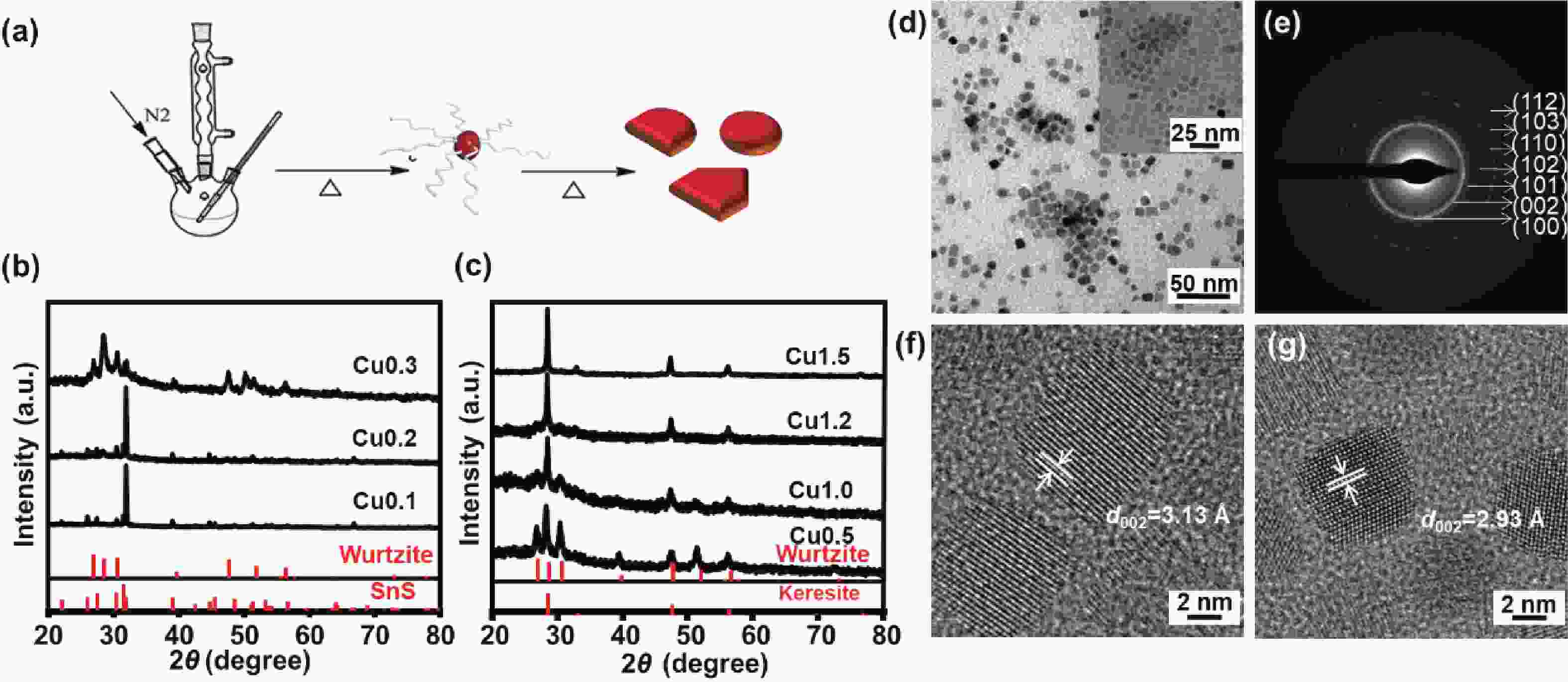
 DownLoad:
DownLoad:
